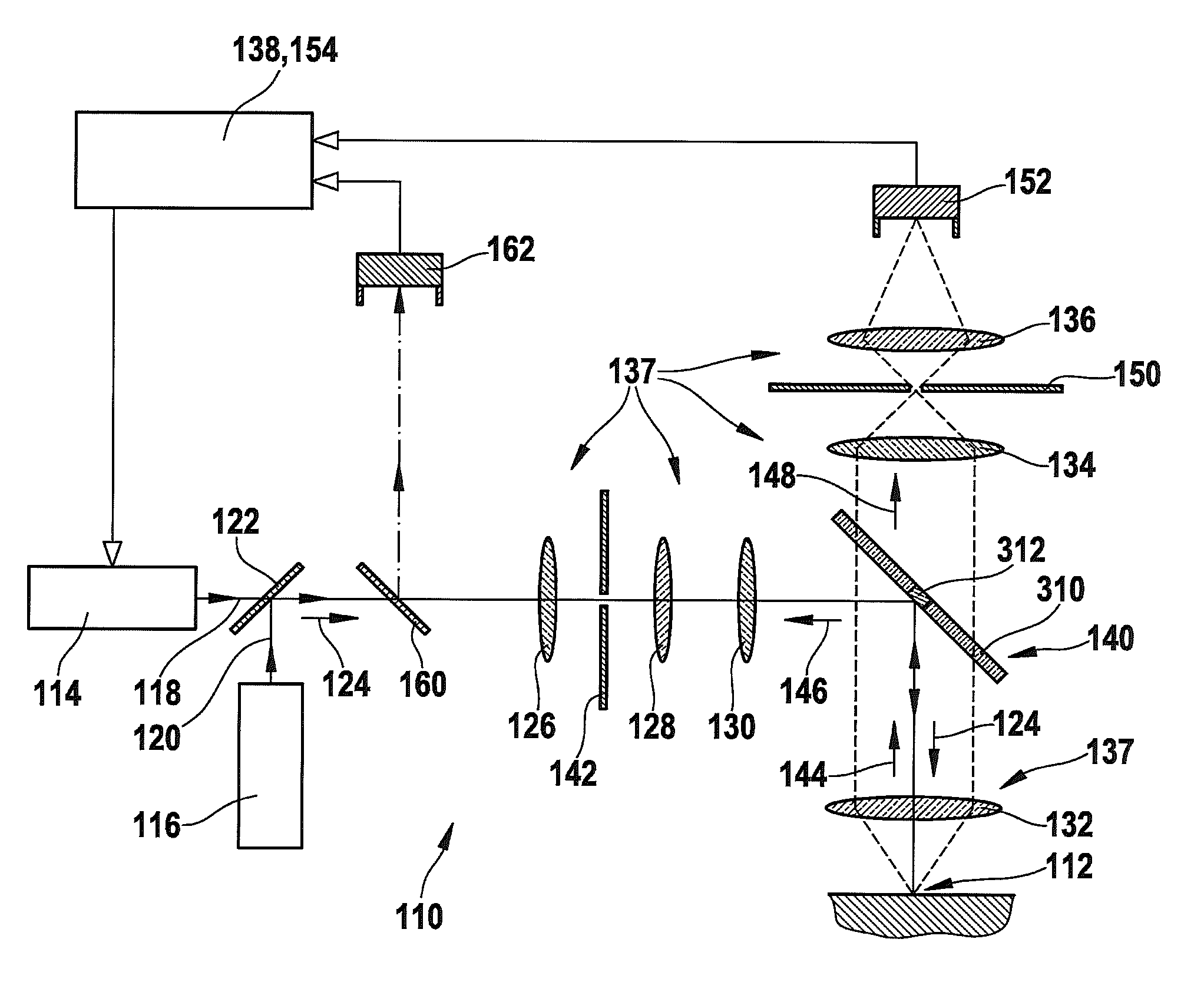Laser microscope with a physically separating beam splitter
- Summary
- Abstract
- Description
- Claims
- Application Information
AI Technical Summary
Benefits of technology
Problems solved by technology
Method used
Image
Examples
Embodiment Construction
[0014]This object is achieved by a device with the features according to claim 1, a method with the features according to claim 19 and a use according to the features in claim 25. Advantageous further embodiments of the invention are described in the dependent claims, both individually or in combination thereof.
[0015]The invention is based, starting from the above-described prior art in the field of fluorescence microscopy, substantially on the idea of using spatially separating beam splitters, as for instance described in DE 198 42 153 C2 or DE 102 57 237 A1, i.e. the separation of the illumination light from the detection light is not carried out depending on the wavelength or spectrally by using the Stokes shift, but is accomplished by separating the beam splitter into a reflecting and a transparent area. In contrast to the methods described in these publications, however, not or not exclusively the fluorescence light is used for generating a signal, but the coherent light emitte...
PUM
 Login to View More
Login to View More Abstract
Description
Claims
Application Information
 Login to View More
Login to View More - R&D
- Intellectual Property
- Life Sciences
- Materials
- Tech Scout
- Unparalleled Data Quality
- Higher Quality Content
- 60% Fewer Hallucinations
Browse by: Latest US Patents, China's latest patents, Technical Efficacy Thesaurus, Application Domain, Technology Topic, Popular Technical Reports.
© 2025 PatSnap. All rights reserved.Legal|Privacy policy|Modern Slavery Act Transparency Statement|Sitemap|About US| Contact US: help@patsnap.com



